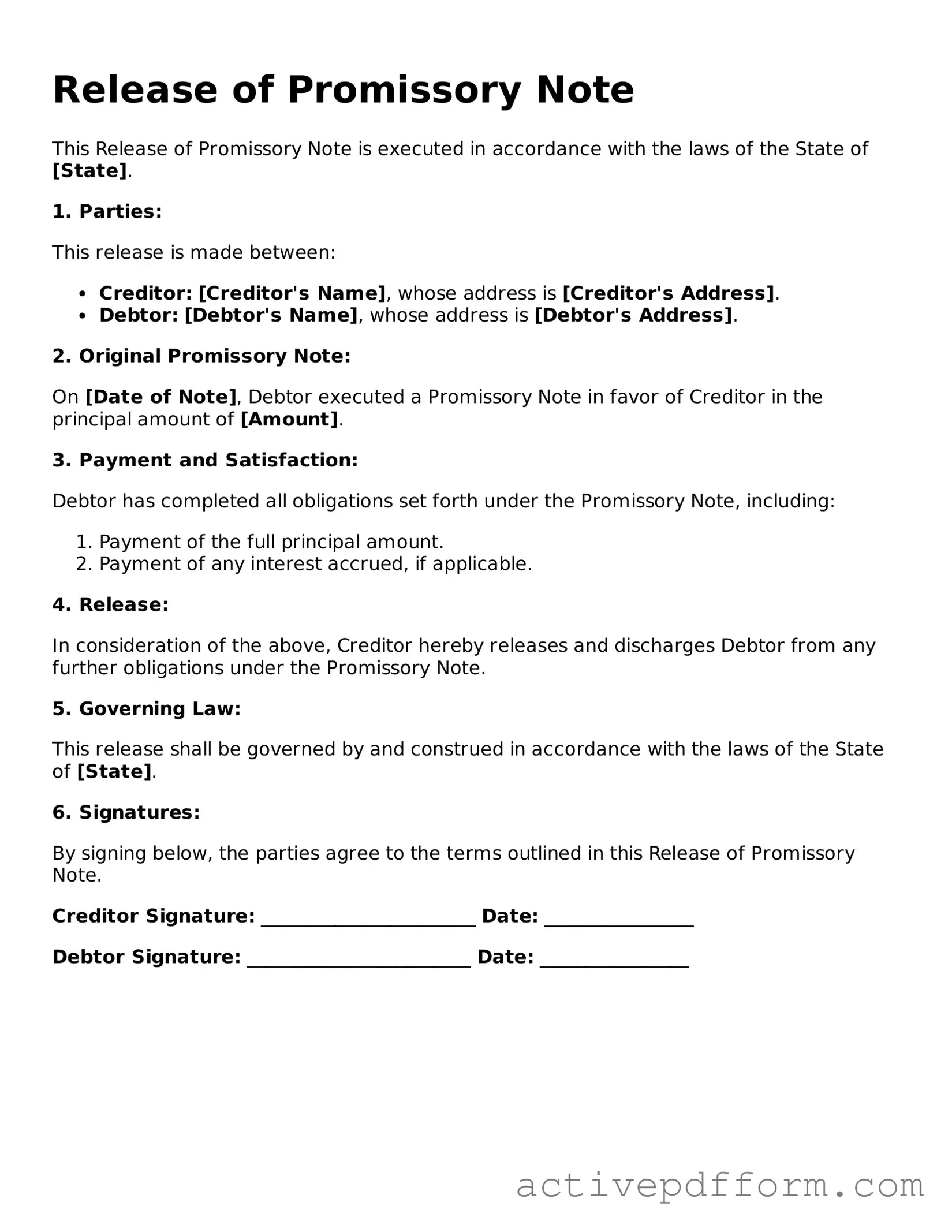What is a Release of Promissory Note form?
A Release of Promissory Note form is a document that officially states that a borrower has paid off their debt, and the lender releases their claim to the promissory note. This form serves as proof that the borrower has fulfilled their obligation and that the lender no longer has any rights to the note or the debt associated with it.
When should I use a Release of Promissory Note form?
You should use this form when a borrower has completely paid off the debt specified in the promissory note. It’s important to document this release to avoid any future claims or misunderstandings regarding the debt.
Who needs to sign the Release of Promissory Note form?
Typically, both the borrower and the lender must sign the Release of Promissory Note form. The borrower needs to confirm that they have paid off the debt, while the lender acknowledges the release of their claim to the note.
Is the Release of Promissory Note form legally binding?
Yes, once signed by both parties, the Release of Promissory Note form is legally binding. It protects both the borrower and lender by clearly stating that the debt has been settled and that the lender has relinquished their rights to the promissory note.
How do I obtain a Release of Promissory Note form?
You can typically find a Release of Promissory Note form through legal stationery stores, online legal document services, or by consulting with an attorney. Ensure that the form you use complies with your state’s laws.
What information is required on the form?
The form generally requires the names of the borrower and lender, the date of the original promissory note, details of the payment (including the amount paid), and signatures of both parties. Additional identifying information may also be necessary, such as addresses or contact information.
Can I use a Release of Promissory Note form for multiple notes?
If a borrower has multiple promissory notes, a separate Release of Promissory Note form should be completed for each note. This ensures clarity and proper documentation for each individual debt.
What happens if I don’t use a Release of Promissory Note form?
If you fail to use a Release of Promissory Note form, the lender may still have a claim to the debt, even after the borrower believes it has been paid off. This can lead to disputes and potential legal issues in the future.
Where should I keep the Release of Promissory Note form after it’s signed?
After signing, both the borrower and lender should keep a copy of the Release of Promissory Note form in a safe place. It’s advisable to store it with other important financial documents to ensure easy access if needed in the future.
